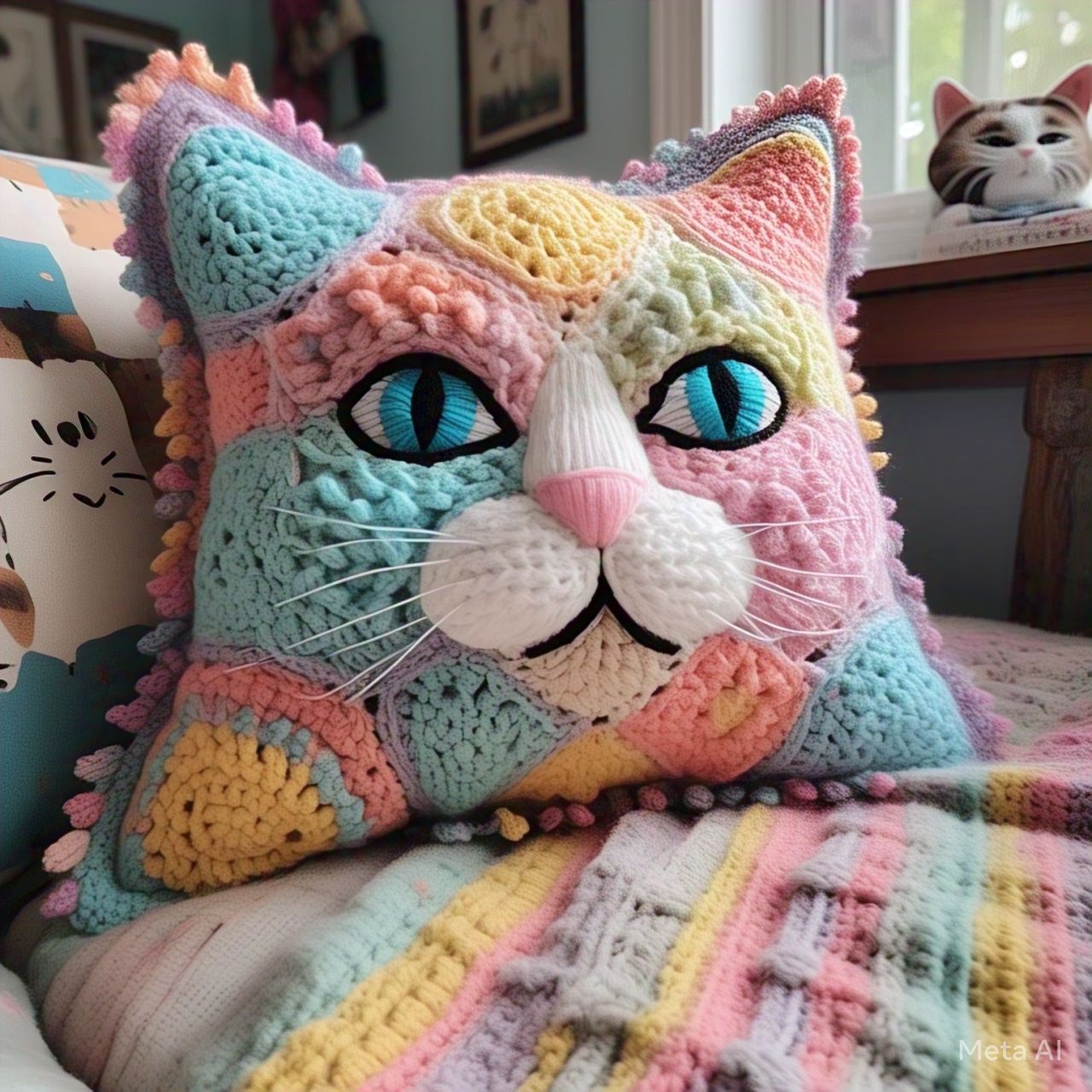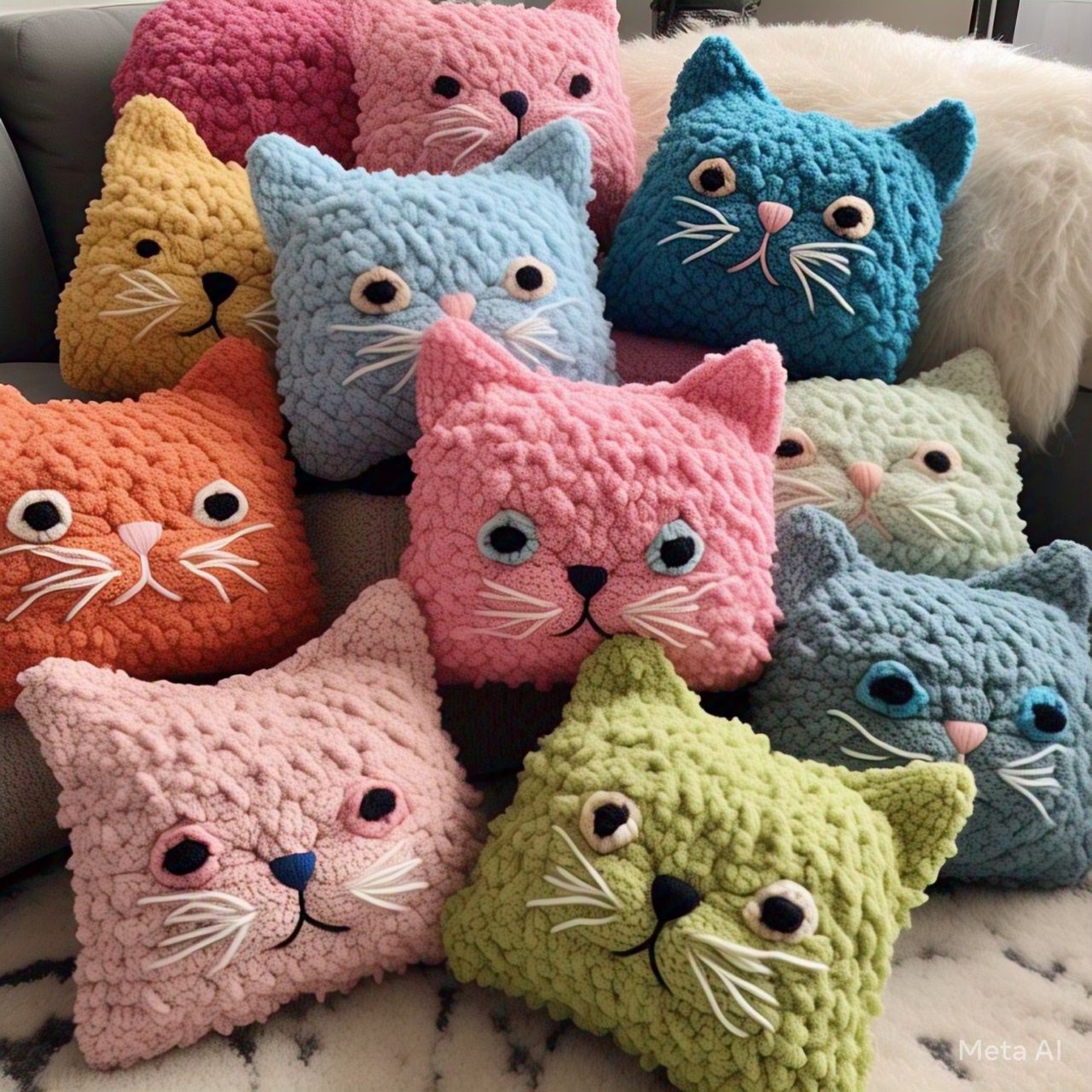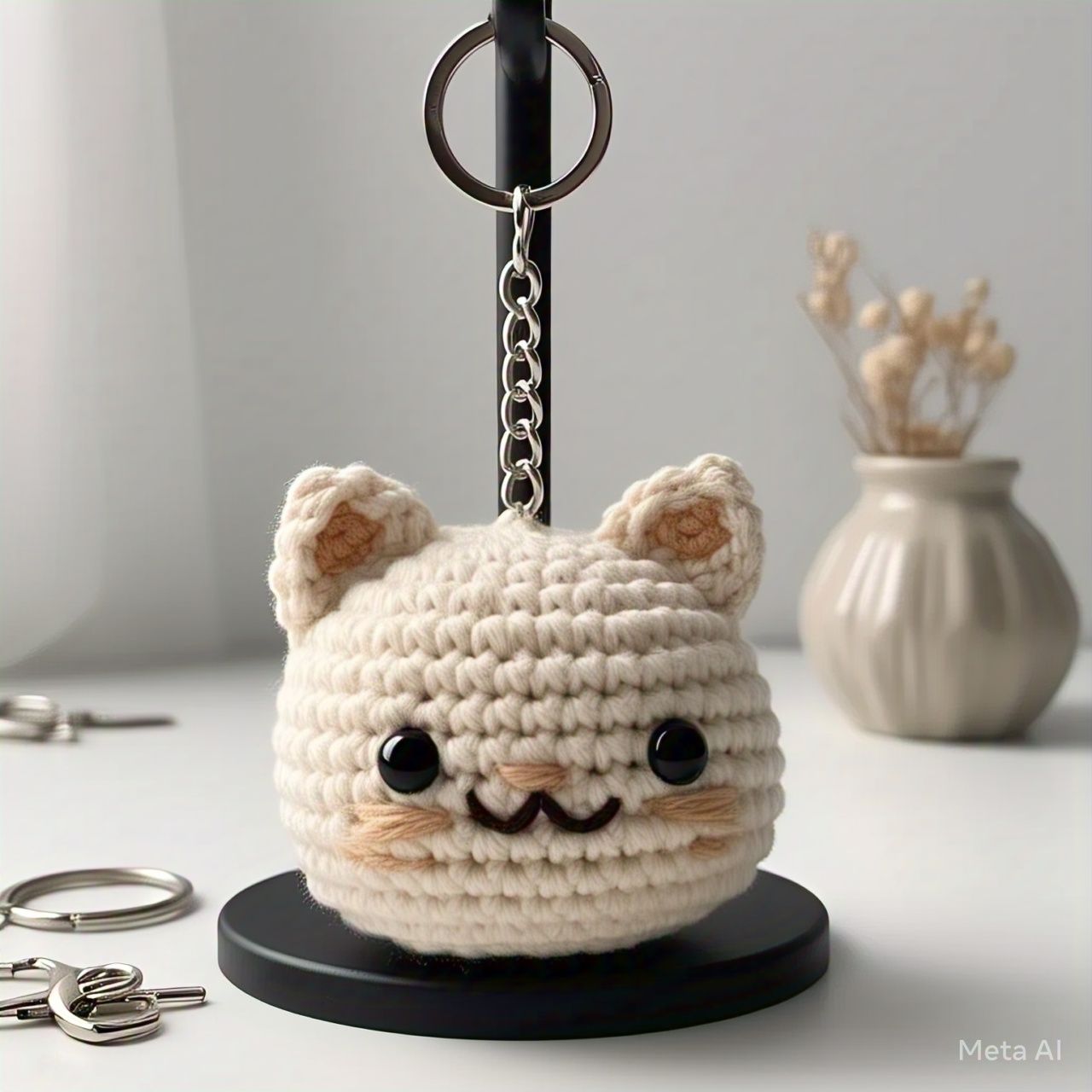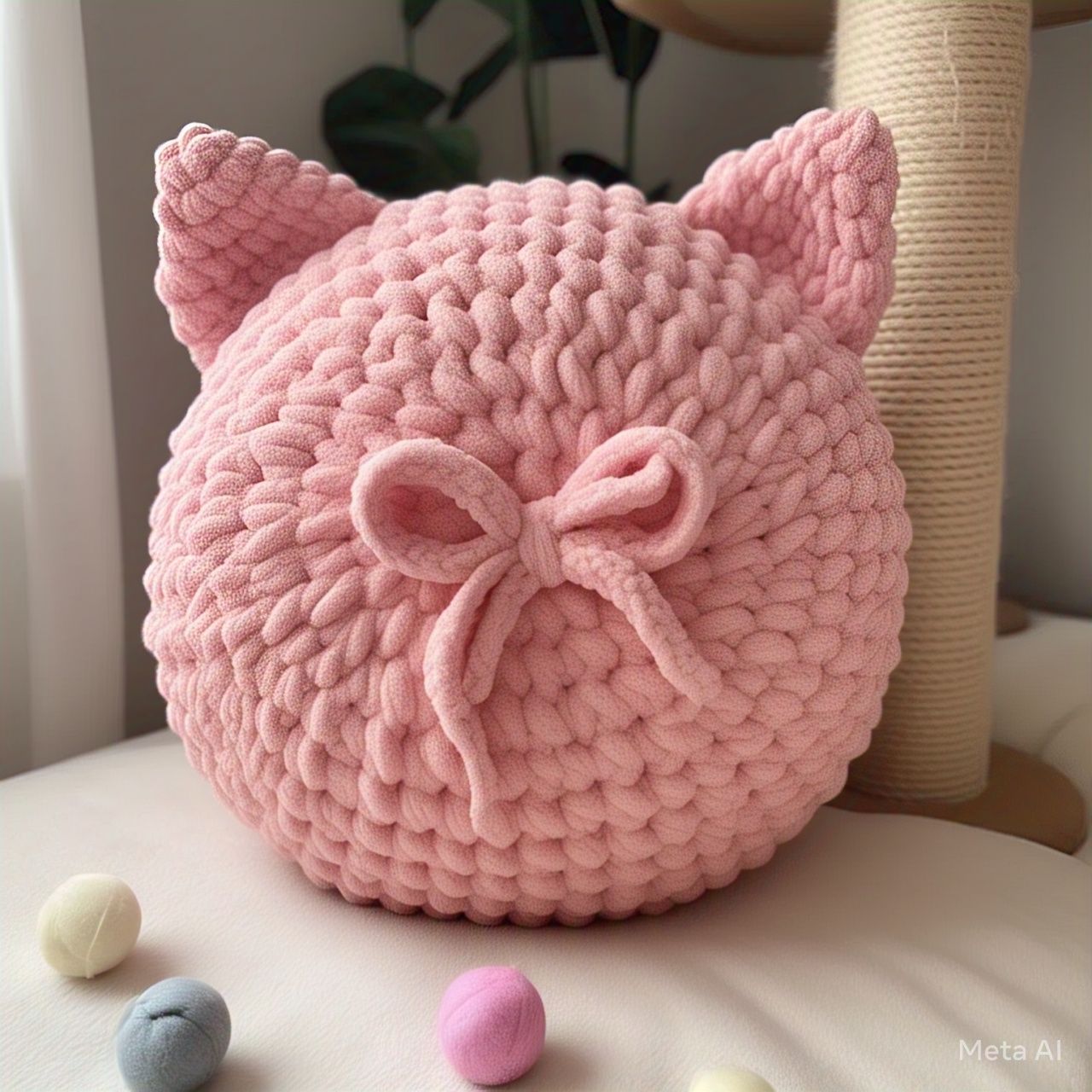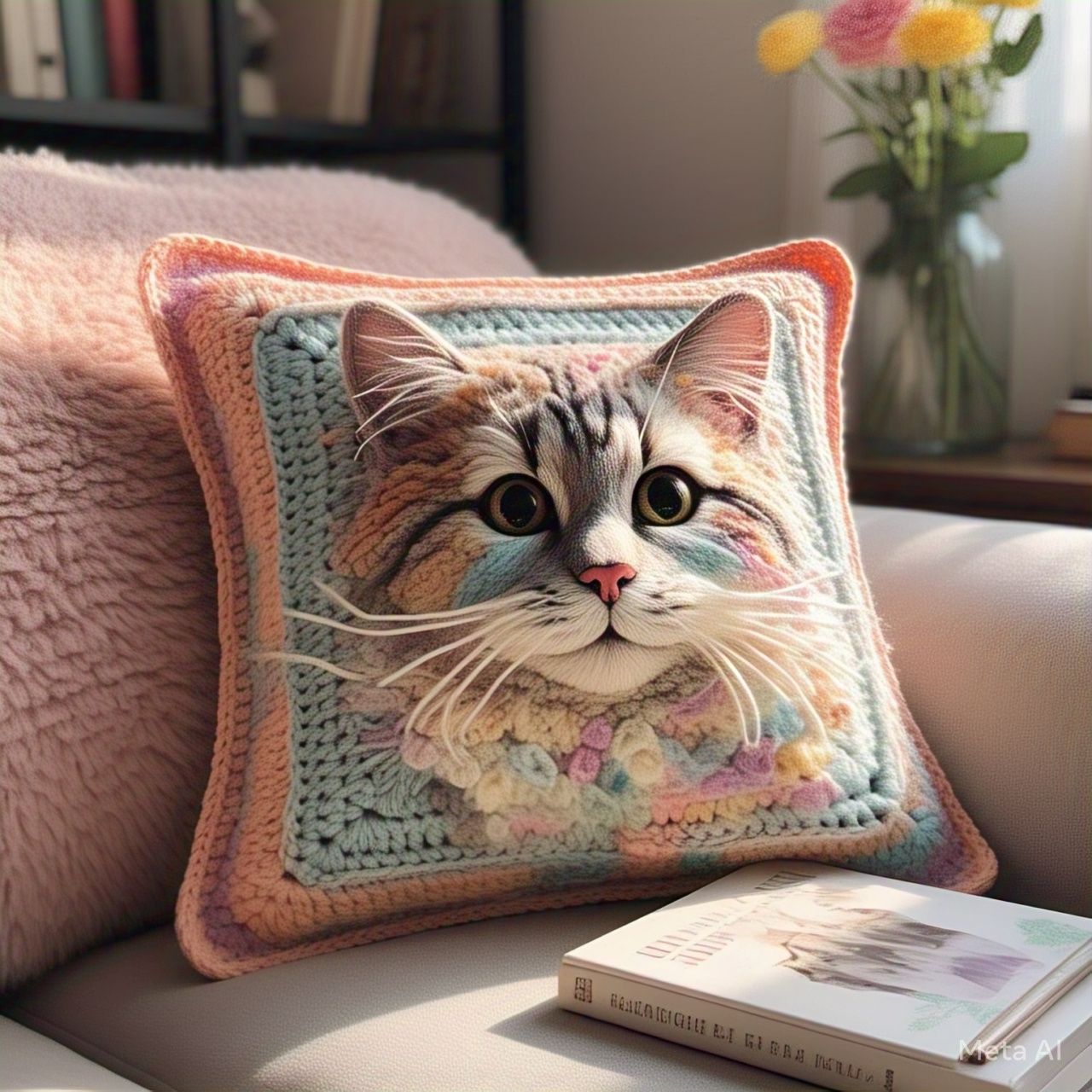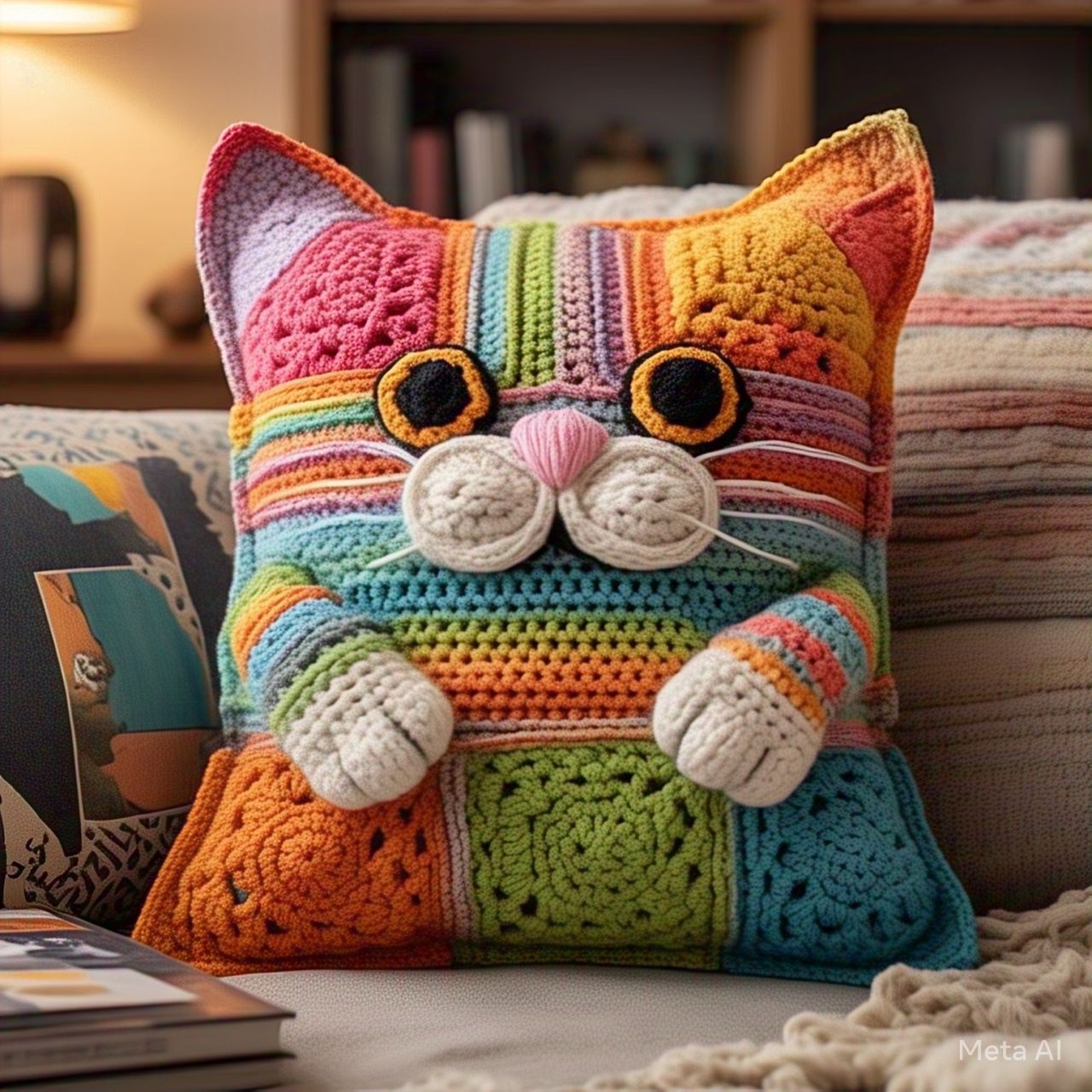How to Start Your Own Crochet Cat Pillow Business from Home
Starting a Crochet Cat Pillow Business
Starting a crochet cat pillow business from home is an excellent way for crafters to turn their passion into profit. With the growing demand for handmade and personalized home decor, crocheted cat pillows have become a popular choice among pet lovers and interior design enthusiasts. This business requires minimal startup costs, making it accessible for beginners and experienced crocheters alike.
Why Choose a Crochet Cat Pillow Business?
One of the biggest advantages of a crochet cat pillow business is its low barrier to entry. Unlike other ventures that require expensive equipment or large investments, this business mainly needs yarn, a crochet hook, and creativity. Additionally, selling handmade products allows for unique customization, which can attract a loyal customer base.
Another reason to consider this business is the flexibility it offers. Working from home means setting one’s own schedule, making it ideal for stay-at-home parents, students, or anyone looking for a side hustle. With the rise of e-commerce platforms like Etsy, Amazon Handmade, and social media marketplaces, reaching potential customers has never been easier.
Understanding the Market Demand
Before diving into the business, it’s essential to research the market. Cat-themed products have a strong following, especially among pet owners who enjoy decorating their homes with animal-inspired items. By analyzing trends on platforms like Pinterest and Instagram, entrepreneurs can identify popular styles, colors, and designs that resonate with buyers.
Handmade crochet items also appeal to consumers looking for sustainable and eco-friendly alternatives to mass-produced decor. Emphasizing the handmade aspect in marketing can help differentiate the business from competitors.
Setting Realistic Goals
Like any business, success doesn’t happen overnight. Setting realistic short-term and long-term goals is crucial. Beginners should start small, perhaps by creating a few sample designs and testing them with friends or family. As demand grows, they can expand their product range and invest in better materials or marketing strategies.
Patience and persistence are key. Building a brand takes time, but with dedication, a crochet cat pillow business can grow into a steady source of income.
What to Expect in This Guide
This guide will walk aspiring entrepreneurs through every step of launching a crochet cat pillow business. From gathering materials and designing products to pricing strategies and marketing, each section will provide detailed insights to help turn a creative hobby into a thriving business.
Essential Supplies and Design Planning
Once the decision to start a crochet cat pillow business is made, the next step is gathering the necessary supplies and planning the designs. Having the right materials and a clear vision will ensure high-quality products that attract customers.
Choosing the Right Yarn and Tools
The foundation of any crochet project is the yarn. For cat pillows, medium-weight (worsted) yarn is often the best choice because it’s durable and works well for both structure and softness. Acrylic yarn is affordable and comes in a variety of colors, while cotton yarn offers a more natural feel. Some crafters may prefer wool blends for extra warmth and texture.
In addition to yarn, the right crochet hooks are essential. The size of the hook should correspond to the yarn weight—typically a 4.5mm to 5.5mm hook for worsted yarn. Other necessary tools include scissors, a yarn needle for weaving in ends, and stuffing material to give the pillows their shape. Polyester fiberfill is commonly used because it’s soft, washable, and retains its form well.
Designing Unique Cat Pillows
Creativity is what sets a handmade business apart. When designing crochet cat pillows, crafters should consider different styles, such as:
- Realistic cat faces – These feature detailed stitches to mimic a cat’s eyes, nose, and whiskers.
- Cartoon-style cats – These use bold colors and exaggerated features for a playful look.
- Minimalist designs – Simple shapes with subtle details appeal to those who prefer understated decor.
Sketching ideas before crocheting can help visualize the final product. Beginners may start with free patterns available online before developing their own signature designs.
Creating a Product Line
Offering a variety of designs can attract a broader audience. Some customers may prefer small decorative pillows, while others might want larger, functional ones for sofas or beds. Seasonal designs, such as Halloween-themed black cats or pastel-colored kittens for spring, can also boost sales during specific times of the year.
Testing and Refining Designs
Before selling, it’s important to test each design for durability and comfort. Crocheters should ensure that stitches are tight enough to prevent stuffing from leaking and that the pillow holds its shape after use. Feedback from friends or online crochet communities can help refine the final product.
By carefully selecting materials and planning designs, entrepreneurs can create high-quality crochet cat pillows that stand out in the market.
Pricing, Branding, and Setting Up an Online Store
Turning crochet cat pillows into a profitable business requires smart pricing, strong branding, and an effective online presence. This section covers how to set competitive prices, create a memorable brand, and launch an online store.
Determining the Right Price
Pricing handmade items can be challenging. The cost should cover materials, labor, and overhead while remaining attractive to customers. A common pricing formula is:
Materials Cost + (Hourly Wage × Time Spent) + Profit Margin = Selling Price
For example, if materials cost 5perpillow,andittakestwohourstomakeat10 per hour, the base cost is 25.Addinga2030. Researching competitors’ prices can help ensure the final cost is reasonable.
Building a Strong Brand Identity
A recognizable brand helps build trust and loyalty. Key branding elements include:
- Business Name – It should be catchy, easy to remember, and relevant to crochet or cats.
- Logo – A simple, visually appealing logo can be used on social media, packaging, and business cards.
- Packaging – Eco-friendly wrapping with a personalized touch (like a thank-you note) enhances the customer experience.
Setting Up an Online Store
E-commerce platforms make selling handmade goods easier than ever. Popular options include:
- Etsy – Ideal for handmade sellers, with built-in traffic from craft enthusiasts.
- Shopify – Offers more customization for those wanting a standalone store.
- Social Media – Instagram and Facebook Shops allow direct sales through posts.
High-quality photos are crucial for online sales. Natural lighting and styled shots (e.g., a cat pillow on a cozy couch) can make products more appealing.
Marketing Strategies
To attract customers, entrepreneurs should:
- Use relevant hashtags like #CrochetCatPillow or #HandmadeDecor on social media.
- Collaborate with pet influencers for product promotions.
- Offer limited-time discounts to encourage first-time buyers.
With the right pricing, branding, and online setup, a crochet cat pillow business can reach a wide audience and generate consistent sales.
Scaling Your Business and Final Thoughts
After establishing a steady flow of sales, the next step is scaling the business. This involves expanding product offerings, improving efficiency, and exploring new markets.
Expanding the Product Range
Introducing new designs keeps customers engaged. Adding matching items like crochet cat blankets or pet beds can increase order values. Custom orders, where buyers request specific colors or patterns, also provide opportunities for higher profits.
Streamlining Production
As demand grows, optimizing the crocheting process becomes important. Investing in ergonomic hooks or yarn winders can speed up work. Hiring part-time help or teaching family members basic stitches can also increase output.
Exploring Wholesale and Craft Fairs
Selling wholesale to local boutiques or participating in craft fairs can expand reach beyond online sales. These channels introduce products to customers who prefer shopping in person.
Final Thoughts
Starting a crochet cat pillow business from home is a rewarding venture that blends creativity with entrepreneurship. By following these steps—researching the market, perfecting designs, setting fair prices, and leveraging online platforms—anyone can turn their crochet skills into a successful business.
The key to long-term success is passion and adaptability. Staying updated with trends, listening to customer feedback, and continuously improving craftsmanship will ensure the business thrives. With dedication, a small home-based crochet business can grow into a beloved brand for cat lovers everywhere.

